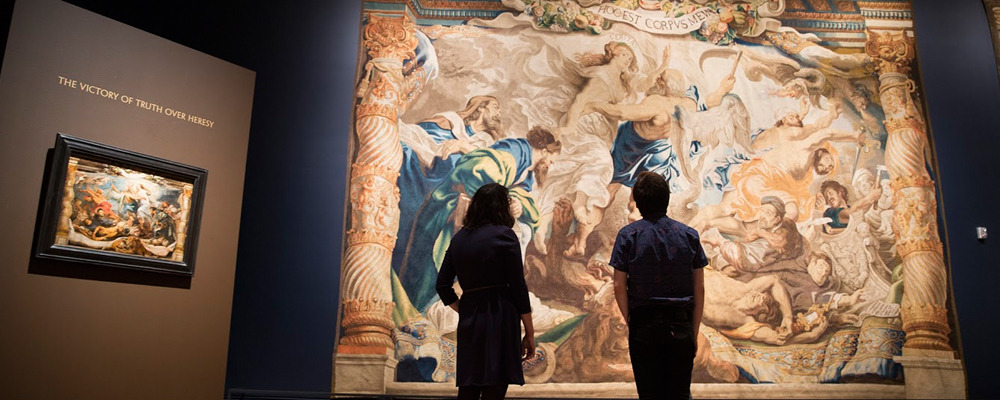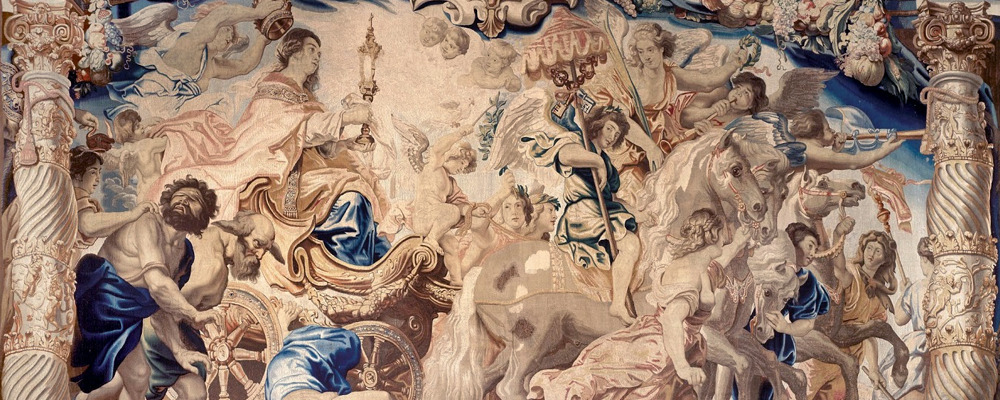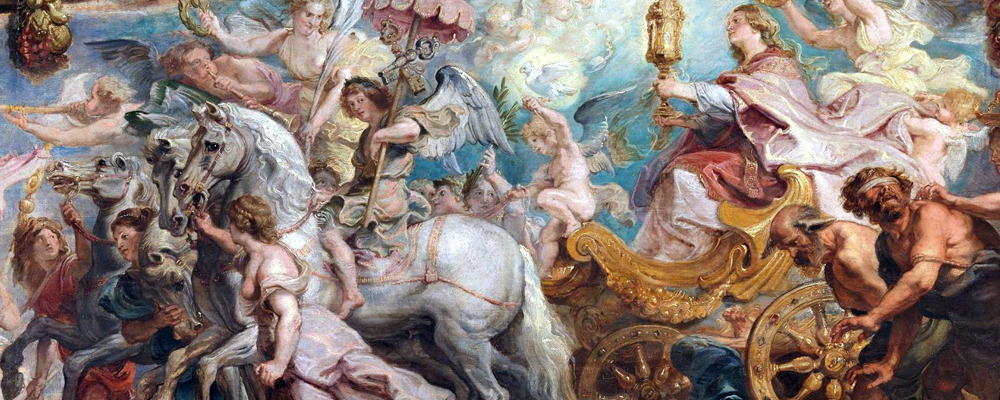Spectacular Rubens: Triumph of Eucharist on Display at Getty
Sandra Miska
Many great artists of the past have made their mark creating vibrant religious art, and Flemish artist Peter Paul Rubens is no exception. In the early 1620s, he designed a series of tapestries, “The Triumph of Eucharist.” Four of these tapestries, along with six preparatory oil paintings, make up the exhibit “Spectacular Rubens: Triumph of Eucharist,” currently on display at the Getty Center.
Born in Germany, Peter Paul Rubens first studied painting in Antwerp, Belgium with local masters. He came into his own in Italy, where he studied Renaissance greats such as Michelangelo and Titian, as well as contemporaries such as Annibale Carracci and Caravaggio. Rubens eventually returned to Antwerp and became court painter to the Spanish viceroys.
Rubens was a man of whom it wouldn’t be a stretch to label accomplished. He was an international diplomat, well informed businessman, and fluent in six languages. The artist helped define the Baroque period, a period of style that made use of exaggerated motion and detail to provoke strong emotions. Baroque style flourished in Western Europe in the early 17th century and was encouraged by the Roman Catholic Church. This is evident the “Eucharist” series, which celebrates the glory of the Catholic Church.
From the Getty: “Rubens drew on a wide range of classical and Christian iconography, and traditional allegories of good versus evil, to express the spiritual victory of the Catholic Church over its foes. Powerful figures in motion, rich color, and playful occasions abound, as Rubens created different levels of reality to engage and delight the observer.”
Rubens designed “The Triumph of Eucharist” for the Infanta Isabel Clara Eugenia, an infanta (princess) of Spain. At the time, Isabel was the governor-general of the Netherlands, having been appointed by her father, King Philip II of Spain. Isabella and her husband Albert stimulated the growth of Flemish Baroque painting, and their reign is considered the Golden Age of the Spanish Netherlands.
Isabella presented the “Eucharist” series to Monasterio de las Descalzas Reales (Convent of the Barefoot Royals) in Madrid. The tapestries were to decorate the convent’s church during important occasions.
The six oil sketches featured in “Spectacular Rubens” were recently conserved at the Museo Nacional del Prado in Madrid with the support of a grant from the Getty Foundation through its Panel Paintings Initiative.
In addition to tapestries and paintings, Rubens created book illustrations and festival decorations. He was knighted by both Philip IV of Spain and Charles I of England.
‘Spectacular Rubens: Triumph of Eucharist’ will be on display at the Getty Center until Jan. 11. To learn more, go here.



